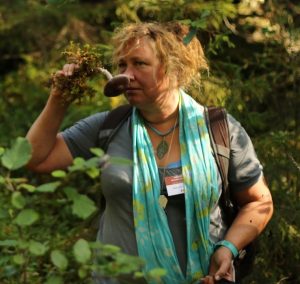Prof. Dr. Annemieke Verbeken, University of Ghant, Belgium

About Prof. Annemieke Verbeken.
Mycologist at Ghent University, Belgium, Lecturer in Mycology and Botany. Head of the mycology research group where the main focus is on biodiversity, phylogeny and evolutionary history of Russulales. Old-school taxonomy is combined with modern approaches: fieldwork in tropical Africa, South East Asia and different regions in Europe, thorough species descriptions, views on species concepts, classifications and phylogenies, illustrations and identification tools. Our research group has made the milkcaps, one of the major groups of ectomycorrhizal fungi in all ecosystems world-wide, the best documented group.
Topic of the plenary talk: Biodiversity and phylogeny of tropical African EM fungi: what did the molecular era learn us?
Abstract of the talk
In 1996 I wrote a PhD about the biodiversity of Lactarius sensu lato (milkcaps) in tropical Africa. Biodiversity was a fashionable and trendy word by then, and I combined fieldwork and detailed microscopical research in order to delimitate and describe species, propose a classification system and brainstorm about possible connections and evolutionary history. The biological methods and our approaches of mycological research underwent a serious revolution since then. First of all, it was the beginning of the molecular era, giving us access to the most direct information of organisms and a multitude of characteristics. Secondly, we more and more realized that world-wide sampling covering the underexplored areas such as woodlands and rainforests in tropical Africa was indispensable to understand the world-wide phylogeny and evolutionary history of the major EM genera. There has been a serious increase in collecting in many African countries, and in sequencing the collected specimens. The generic landscape in Russulales also changed. Here I want to reflect on the impact of this molecular era on the milkcaps in a large sense: Lactarius and Lactifluus. What species concept do we use? How do we translate this species concept in identification tools that can be used in function of recognizing edible species and in function of forest management?
